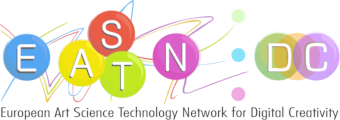In this paper I represent a digital repository about Cultural Heritage for lifelong learning, called Estia. This repository will showcase the representation and digital preservation of the existing and new knowledge on the topic of Residential Settlements. The dominant research question concerns private architecture and residential settlements as a channel of aesthetics, urban and historical narrative, while the documentation of research material is in the field of History. Estia will provide the means to establish knowledge representations based on digital assets and semantic annotations, in a way that captures and preserves both tangible and intangible Cultural Heritage dimensions. Meaningful and documented presentations will be achieved through interactive digital map technologies and the Internet.
Estia will comprise a digital repository for specialized researchers. It can make an exceptional opportunity for the local market and tourism professionals because the platform can showcase Cultural Heritage as a leading asset. Traditional settlements as places of visit and tourist attractions with the population influx are becoming places of significant interest. Cultural presence, the feeling of being there and then, increases the impact of a cultural visit and offers experiential memory. They also include the natural environment in which they were constructed and the materials available, as well as relevant literature, documents, and archives as carriers of information on their social and historical context. Intangible dimensions include the architectural design and building methods and skills, as processes of folk architecture from experienced practitioners. RSs carry elements of historic and social context from the place of origin of practitioners, as well as from the new location of their settlement. These narratives are intended to enhance cultural tourism products for that region and, in turn, stimulate funding for their preservation.
The methodology and implementation will use an integrated approach for representing knowledge on these multiple and diverse faces in a way that supports CH research, encompasses
• curation of heterogeneous digital assets, including 3D reconstruction,
• a digital repository and information systems accessible to the public,
• awareness on and engagement with the research material, as narrative and not only as
information,
• validation of project outcomes, in an online, pilot application that exemplifies how this knowledge can be integrated into educational programs and cultural tourism products.
The scientific problem we address is the research gap on the historical human geography of the refugees of Asia Minor in the first decades of the 20th century and their first settlements. In this historical transition, and without state provision, experienced craftsmen had the responsibility to provide residential security. These settlements are the cornerstone of the cultural, historical, social changes that took place in the first decades of the 20th century. As elements of folk craftsmanship, these settlements have extraordinary architecture characteristics and values. Because of ageing and weather corrosion, these architectural testimonies are endangered. Lack of digital representation and aggregation of this knowledge and information assets hinders their availability to researchers, on this lesser studied topic.
Estia will provide the means to document and digitally preserve, the architecture of the narratives of refugee history (oral & documented) that provide knowledge on this social and historical domain. The historic and social context that is contained in our research topic, referring to the relocations of the population of a specific area in Greece in the past, for the first time is going to be documented together with oral tradition.
Back
“Reflections: Bridges between Technology and Culture, Physical and Virtual”
is supported by:






